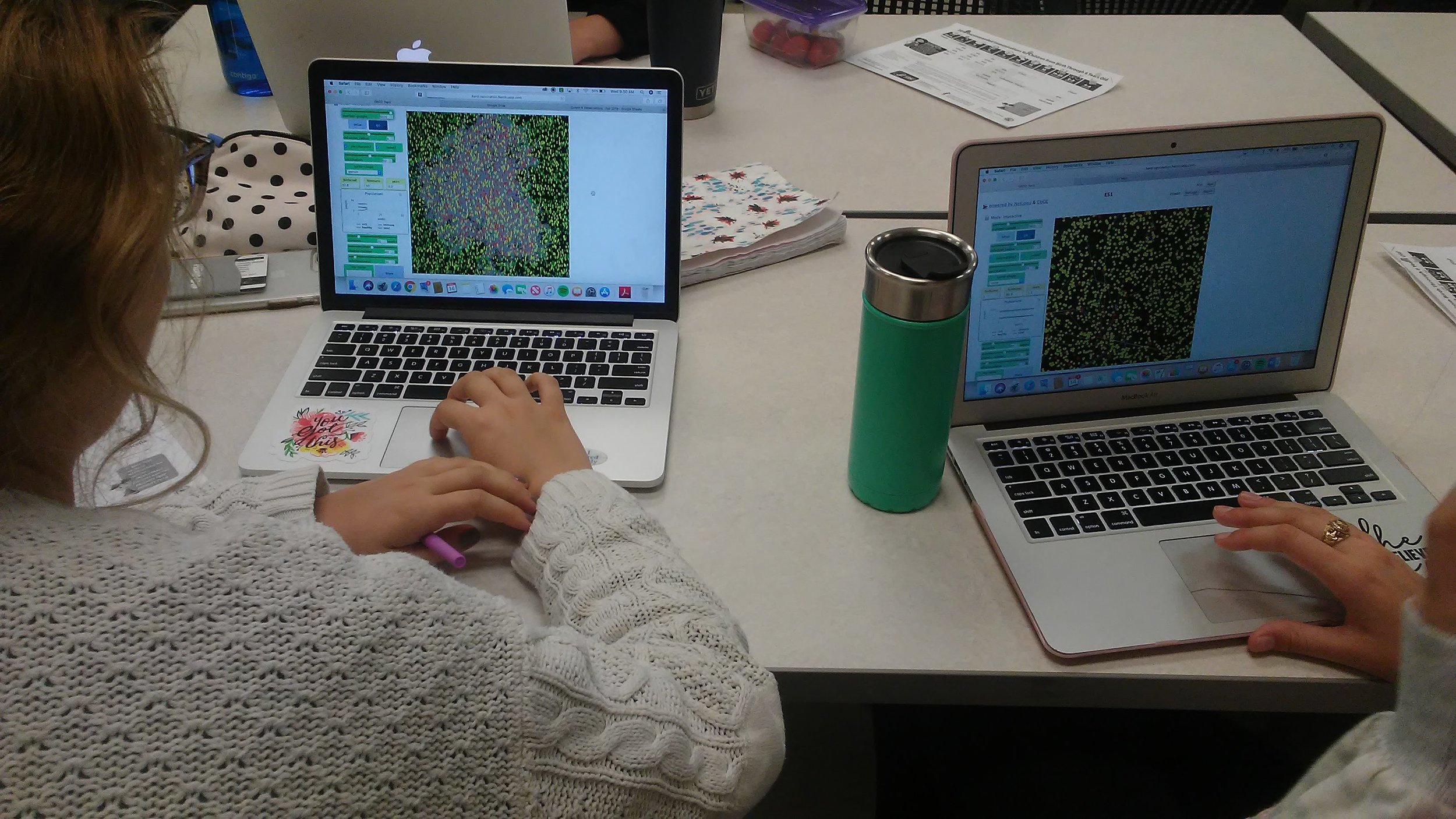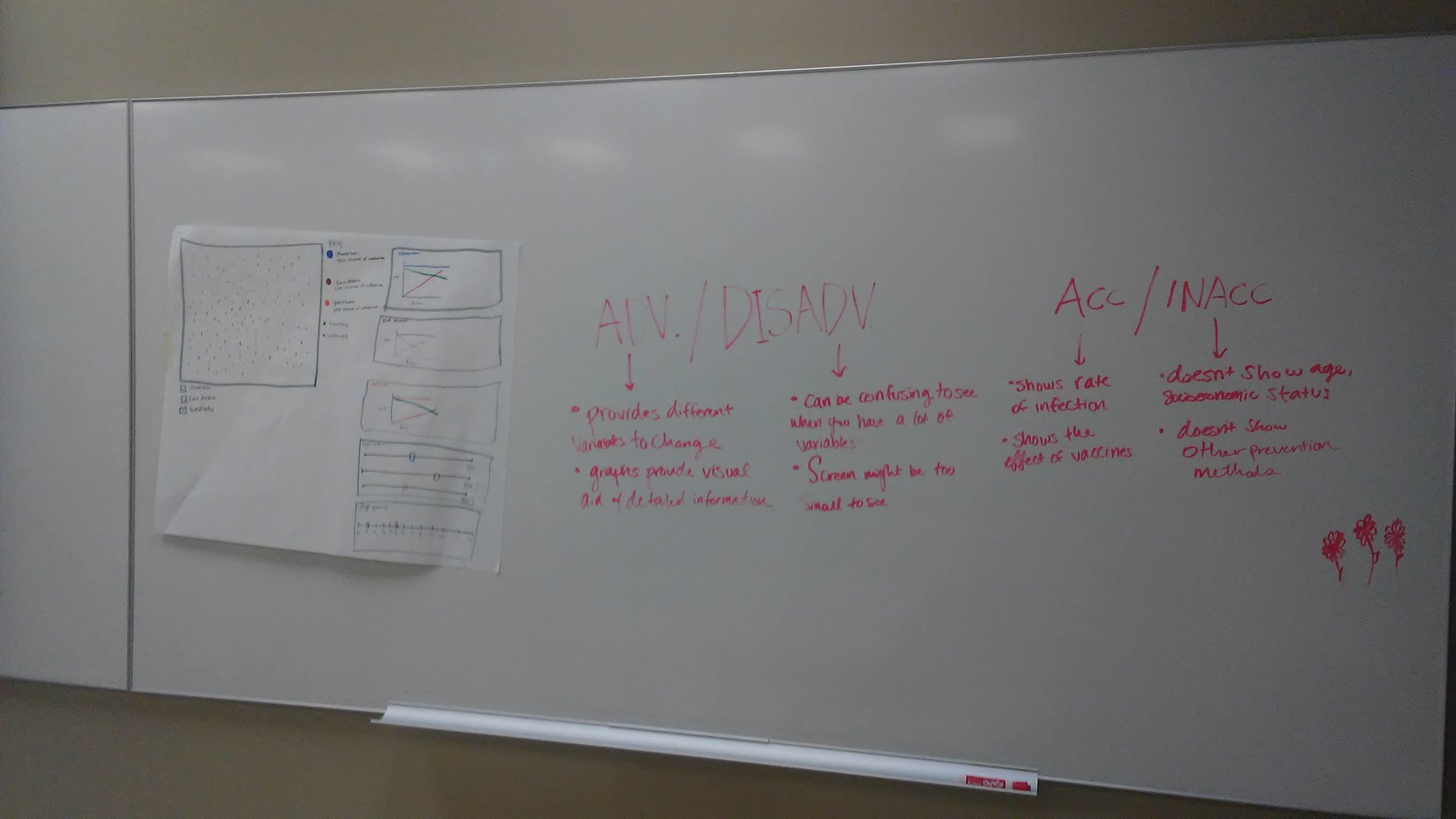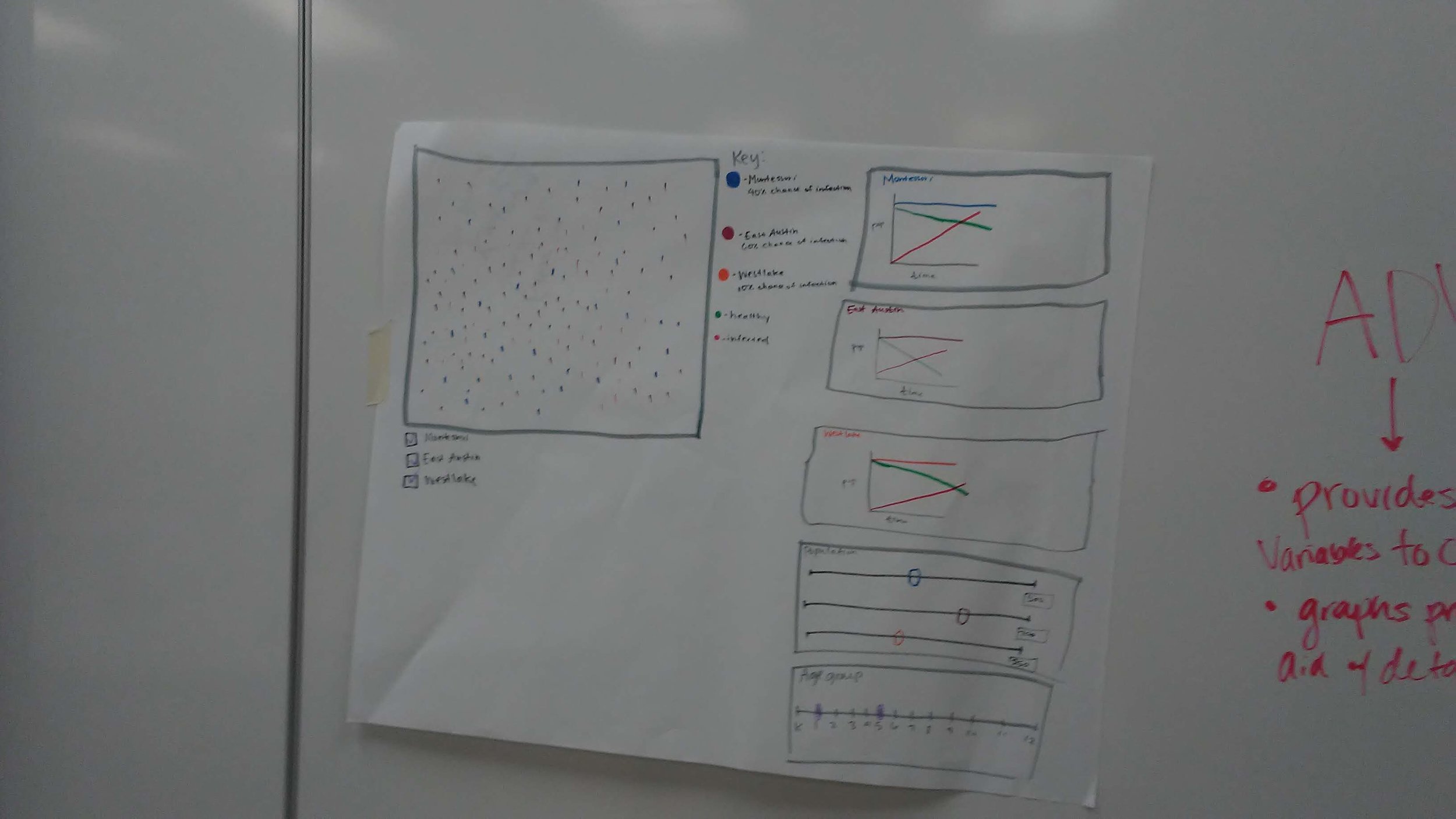The Context:
Texas requires students to be vaccinated to protect against a variety of viruses before entering Kindergarten; however, parents can apply for an exemption to this requirement for medical or personal reasons. While the number of parents in the state of Texas who apply for and receive the exemption is low (.84%) this average hides the variation that occurs.
Austin Independent School District (AISD) has one of the lowest vaccination rates in the state, with 2.2% of its students entering schools unvaccinated for one or more virus. Some schools within Travis County Texas herald exemption rates of 40%, meaning some school sites are in particular danger of infectious diseases.
Herd immunity a concept in epidemiology that describes the relationship between the spread of a disease and the percentage of the population (herd) who is vaccinated against the disease. For many diseases, a herd immunity of above 98% is required to stop the spread of an infectious disease.
Two preservice elementary science teachers running simulations of measles spreading at varying densities and vaccination rates.
Using GbCC to Explore Herd Immunity
Discussing the advantages and disadvantages of the anchor disease model
A model plan to represent three school sites with varying vaccination levels
Elementary Science Methods (ESM) is a courses taught at The University of Texas at Austin. Students in the class are preservice teachers who will one day soon teach elementary students in Texas - many of whom may be unvaccinated. Over the course of two weeks, two cohorts of students taking ESM (n=40) explored and evaluated GbCC models built by an undergraduate Computer Science Student, Kalpana Vaidya, demonstrating the concept of herd immunity.
Students used the model to run simulations of varying vaccination rates to discover properties of disease transmission. Afterwards, students read articles and discussed the re-emerging phenomenon of anti-vaccers: parents who resist vaccinating their children for a variety of reasons (fear of side-effects, preference for natural immunity, religious beliefs, etc.)
Realizing the full potential of model-based learning and GbCC, students were given the challenge to author changes to the model to represent three schools with varying vaccination rates: (a) a small, private school; (b) a large, public school in an affluent area; and (c) a large, public school located in a historically underserved community.
Students discussed the perceived differences amongst these three schools, and re-imagined the functioning of the models to represent this new scenario. Implicit in these conversations was dialogue on the social factors that contribute to disease transmission and vaccination rates amongst heterogenous populations.
While reprogramming a model in three hours is a difficult task; preservice teachers able to engage in rich conversations illuminated the many variables that contribute to public health. The GbCC models served both as a predictive tool for thinking about vaccination rates; but also, an artifact to engage in dialogue with, to push understanding of complex problems further.
To work with the disease models used in this presentation, follow the links below:
www.tinyurl.com/diseasemodel1
www.tinyurl.com/diseasemodel2
www.tinyurl.com/finaldiseasemodel


